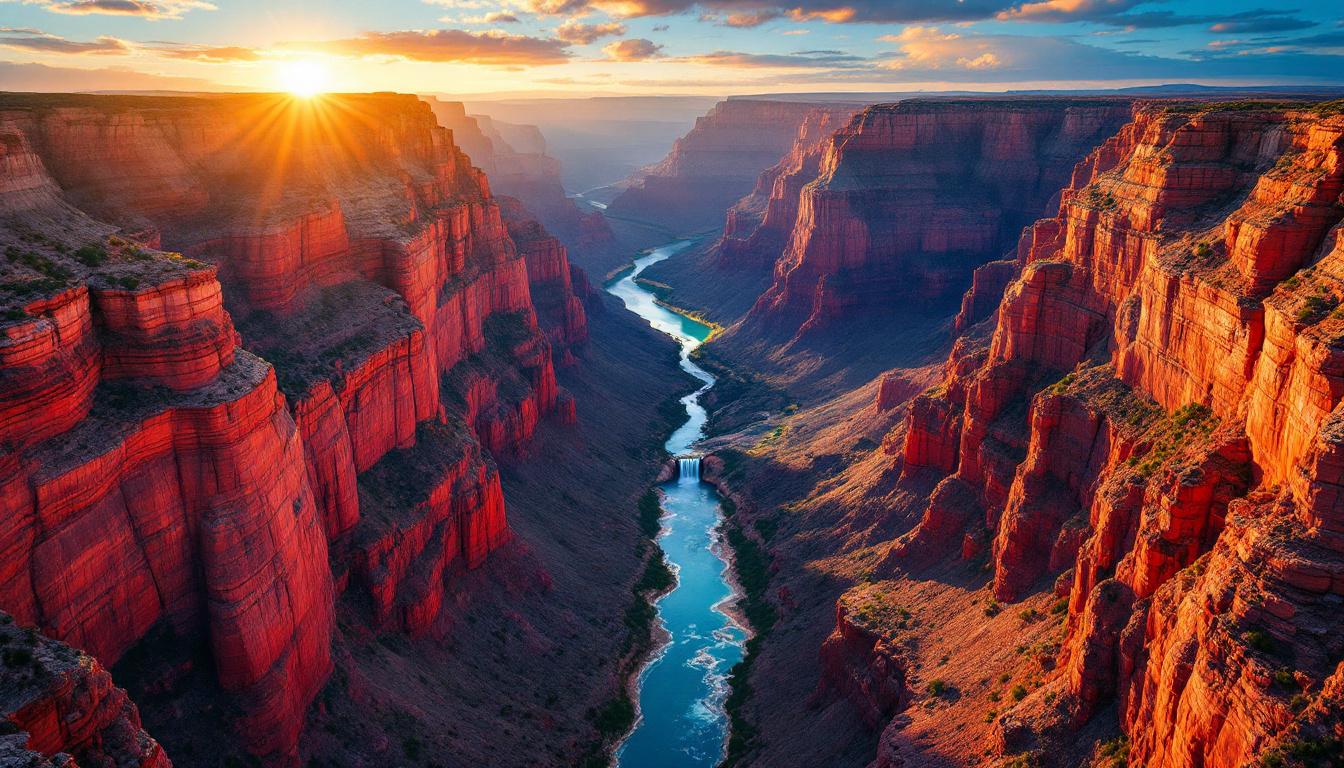The Grand Canyon’s majestic expanse draws over 5 million visitors annually, making it America’s third most visited national park. This colossal chasm, deeper than Rhode Island is wide, offers far more than just spectacular rim views. Beyond its picture-perfect panoramas lies a complex tapestry of hidden marvels, ancient history, and ever-changing natural wonder that rewards those willing to venture beyond the obvious.
A natural masterpiece of staggering proportions
Carved over millions of years by the persistent Colorado River, the Grand Canyon stretches 277 miles long, up to 18 miles wide, and plunges more than a mile deep. This geological wonder reveals Earth’s history through its exposed rock layers, some dating back 1.7 billion years. The multi-hued stratifications create an ever-changing canvas as sunlight plays across the canyon walls throughout the day.
“The Grand Canyon is not just a destination—it’s a journey through time itself. Each layer tells a story that predates human existence,” explains Dr. Ryan Thompson, geologist and canyon researcher.
Beyond the South Rim: discovering hidden sanctuaries
While the South Rim attracts most visitors with its famous viewpoints like Mather Point, savvy travelers seek less crowded alternatives. Yaki Point and Shoshone Point offer equally stunning vistas without the crowds. The secluded spots often reveal wildlife and natural phenomena that busier locations miss, creating more intimate connections with this vast landscape.
Ancient waters and turquoise falls
Perhaps the canyon’s most photogenic secret lies within the Havasupai Indian Reservation. Havasu Falls cascades 100 feet into striking turquoise pools, creating an otherworldly contrast against red rock walls. This oasis requires permits and a challenging 10-mile hike, but rewards visitors with scenes rivaling those of tropical destinations at a fraction of the international travel cost.
The undiscovered underworld
Few visitors realize the Grand Canyon harbors over 1,000 caves, most unexplored. These subterranean chambers hold archaeological treasures and unique geological formations. The park’s cave systems, like the remote hidden ecosystems found in protected sanctuaries worldwide, often contain species found nowhere else on Earth.
River perspective: the ultimate canyon immersion
Viewing the canyon from its creator—the Colorado River—offers a completely different experience. Multi-day rafting trips reveal hidden grottos, side canyons, and waterfalls inaccessible by foot. From this vantage point, the immensity of the canyon walls towering above creates a humbling perspective that rim views simply cannot match.
“You haven’t truly experienced the Grand Canyon until you’ve seen it from the river. Down there, between those ancient walls, you feel the heartbeat of the place,” shares Maria Gonzalez, veteran river guide.
Indian Garden: an unexpected oasis
Halfway down the popular Bright Angel Trail sits Indian Garden, a verdant haven of cottonwood trees and flowing streams. This lush contrast to the surrounding desert provides a crucial rest area for hikers and harbors diverse wildlife. Like other hidden natural gems accessible only to those willing to journey beyond tourist hotspots, Indian Garden rewards visitors with serenity amid grandeur.
Preserving cultural heritage amid natural wonder
The canyon holds profound significance for numerous Native American tribes. The Desert View Watchtower incorporates indigenous designs, while ancient pictographs and petroglyphs throughout the park document human connection spanning millennia. This cultural dimension adds depth to the canyon experience, similar to how UNESCO protects sites of both natural and cultural importance worldwide.
Practical wisdom for canyon explorers
Visit during shoulder seasons (April-May or September-October) to avoid extreme temperatures and peak crowds. Early morning or late afternoon visits offer the best lighting for photography and cooler hiking conditions. Always carry ample water, regardless of season or trail length—the desert environment demands constant hydration.
The Grand Canyon transcends its reputation as a scenic overlook. Its true magic emerges when visitors slow down, venture beyond obvious viewpoints, and engage with its multifaceted character. Whether peering into billion-year-old rock, discovering hidden waterfalls, or connecting with ancient cultural sites, the canyon rewards curiosity with experiences that remain etched in memory long after the journey ends.
